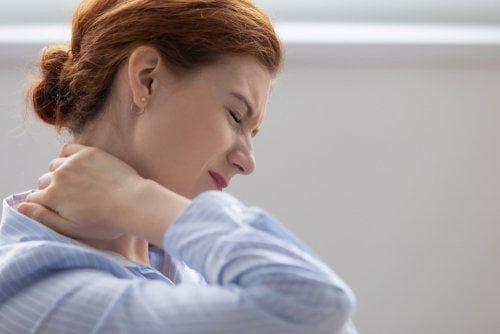By far, the most common reason for neck pain is mechanical dysfunction. To put it simply, when the neck no longer functions mechanically as it should. This causes localised irritation both to little joints called facet joints and to their supporting muscular structures. This as opposed to structural changes, either congenital or disc, that can be seen on MRI scans.
Cervical Disc Prolapse
Cervical disc prolapse is a prolapse of the soft material within the middle of an intervertebral disc of the neck (nucleus pulposus) that breaks through the outer ring of the disc, known as the annulus fibrosis.
The prolapse may press on one of the nerves supplying the arm giving rise to neck pain, numbness and weakness in the arm and then collectively as brachialgia.
Patient History
Patients who develop symptoms of a prolapsed intervertebral disc within the neck often complain of neck pain and tingling in a specific part of the upper limb, depending upon which disc is prolapsed.
The most common disc prolapses are those between the fifth and sixth cervical vertebra (C5-6) and the sixth and seventh cervical vertebra (C6-7).
Pain goes into specific regions that indicate the level of the prolapse and there is sometimes weakness associated with a particular movement.
From the history, it is often possible to diagnose which of the most common discs have prolapsed.
When patients are examined, they often demonstrate reduced sensation in the area of pain and weakness of particular movements. In addition, particular reflexes in the upper limb are lost, which the examining doctor can demonstrate.
This information gives further evidence of the level of disc prolapse.
An MRI scan is the most common special investigation used for a prolapsed intervertebral disc within the neck. The MRI scan confirms the level of the disc prolapse, the size of the prolapse and the extent of the nerve compression.
Plain X-rays may be used, but they are less helpful as they only show the bones and do not show the discs themselves.
Treatments with Our Neck Pain Specialist in London &,Woking
Patients often find that a neck pain osteopath helps. Acupuncture is also very helpful in reducing neck pain, particularly when the neck is too tender to treat physically. Very often trigger points are found in the base of the neck and shoulders which when needled, can bring immediate relief.
Should symptoms prevail after a time, a referral will be made for injection of steroids in and around facet joints to help diminish symptoms and avoid surgery.


